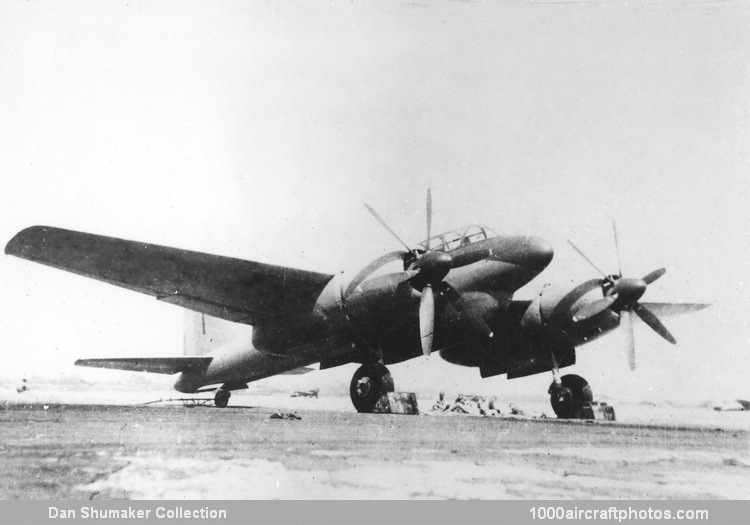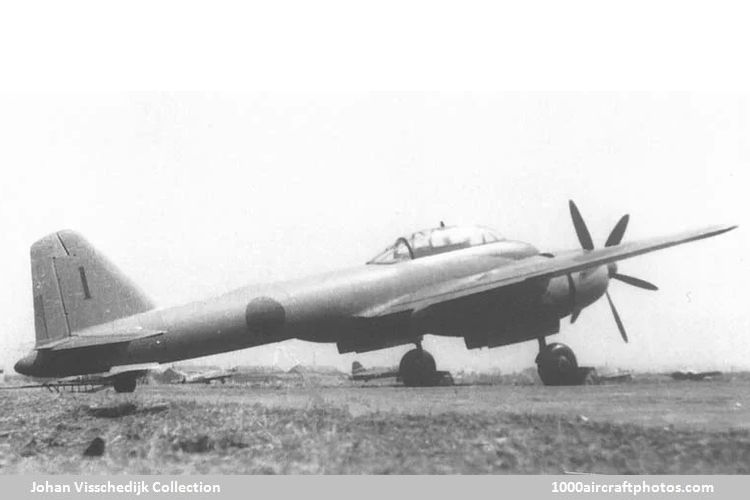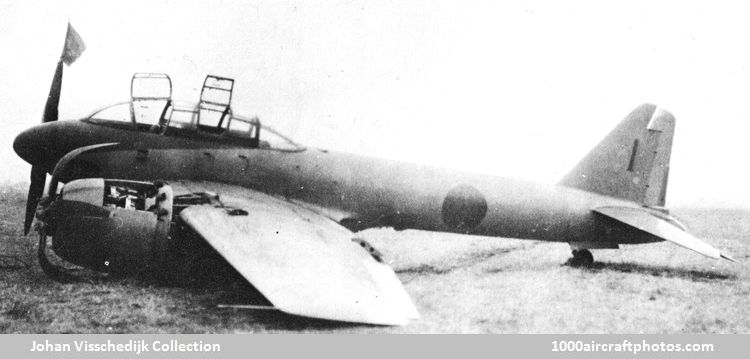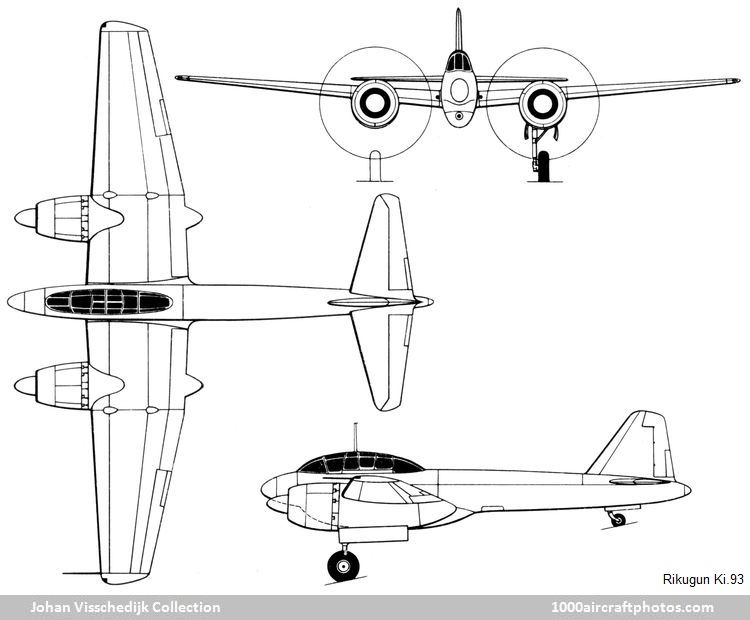04/21/2025. Remarks by
Johan Visschedijk: "Derived from a strategic fighter project drafted shortly before the outbreak of the Pacific War by the Kaku Hombu (Air Headquarters) of the Japanese Imperial Army, a two-seat experimental multi-role aircraft intended for both the bomber destroyer and ground-attack roles was first projected late in 1942. It was the first combat aircraft to be designed entirely by the Rikugun Kokugijutsu Kenkyujo (Army Aerotechnical Research Institute), usually known by the abbreviation Giken.
However, the aircraft suffered rather protracted design gestation, and it was not until February 22, 1943 that authorization was given for the construction of two flying prototypes and a static test airframe, and the Kitai (Experimental Airframe) designation Ki-93 assigned. The construction of the prototypes was initiated in April 1943 by the Tachikawa Dai-ichi Rikugun Kokusho (1st Army Air Arsenal), an Army-owned plant which had previously undertook modifications to Imperial Japanese Army Air Force aircraft produced by other manufacturers and had built small quantities of Mitsubishi Ki.30s and also Nakajima Ki.43 Hayabusa fighters.
(
Johan Visschedijk Collection)
The Ki.93 was designed specifically to carry a large-caliber cannon in a ventral bulge. It was proposed to install the new 2.24 in (57 mm) Ho-401 cannon in initial production models, combined with a pair of 2.24 in (57 mm) Ho-5 cannon and a flexible 0.50 in (12.7 mm) Ho-103 machine gun, but the use of a 2.95 in (75 mm) field gun was also considered. This gun had been fitted experimentally in a Kawasaki Ki.45-KAId although trials had been unsuccessful, the tail assembly of the aircraft being blown off when the cannon was fired.
The Ki.93 was powered by two Mitsubishi Ha.214 eighteen-cylinder air-cooled radial engines rated at 1,970 hp for take off and 1,730 hp at 27,230 ft (8,300 m). These drove six-blade constant speed airscrews. The all-metal stressed-skin fuselage was basically of circular section. the two crew members being seated under a curved hood with separate sliding sections. The wing was a two-spar structure and carried large split flaps.
Two variants of the basic design were proposed, the Ki.93-Ia bomber destroyer and the Ki.93-Ib ground-attack fighter which, in addition to the gun armament, carried two 550 lb (250 kg) bombs on racks between the engine nacelles and fuselage. The first prototype was completed in March 1945, and after performing engine runs and taxying trials at the Tachikawa airfield, took off on its first flight on the afternoon of April 8, with test pilot, Lieutenant Moriya at the controls.
(
Johan Visschedijk Collection)
After a flight of 20 minutes at an altitude of 6,562 ft (2,000 m), during which low-speed handling behavior was investigated, the pilot miscalculated the sink rate of the prototype during the landing approach, touching down on soft ground short of the runway threshold. The port mainwheel leg failed and the aircraft suffered damage to the port engine and propeller, necessitating return to the workshops for repairs before the flight test program could be continued. Moriya reported that the handling characteristics of the Ki.93 had, during the test flight, proved satisfactory and all systems tested had functioned well.
Within four weeks repairs to the prototype had been effected but on the night prior to the scheduled resumption of the flight test program, the facilities at Tachikawa airfield suffered extensive damage in an attack by B-29 Superfortresses and the first prototype Ki.93 was destroyed. The second prototype had by now attained an advanced stage in manufacture and was evacuated to the Takahagi airfield in the Saitama Prefecture for final assembly and flight testing. Assembly had been completed but the installation of equipment was still incomplete when hostilities terminated.
At a late stage in the development of the Ki.93, some consideration had been given to the possible installation of a 2.95 in (75 mm) Type 88 cannon for a more specialized anti-shipping variant which was referred to as the Ki.93-1-Otsu, but owing to preoccupation with the finalization of the prototypes, this scheme progressed no further than the initial proposal stage.



